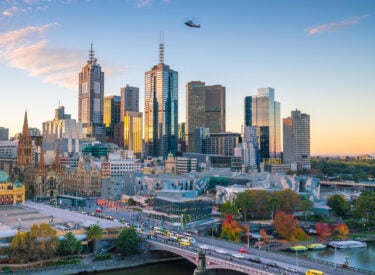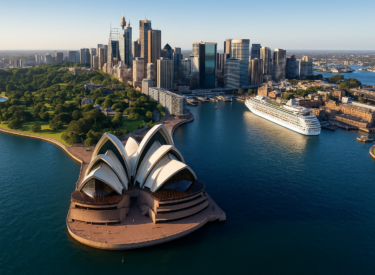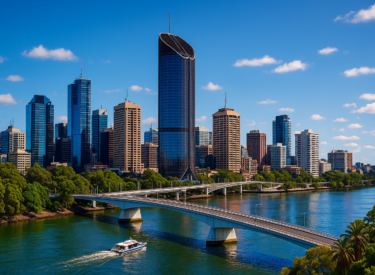
Key takeaways
Clearly define whether your goal is short-term cash flow or long-term wealth creation.
Prioritising immediate positive cash flow can severely limit long-term wealth.
Properties advertised for instant positive cash flow often underperform due to weaker fundamentals (regional or secondary markets).
Short-term gratification from rental income rarely translates into long-term financial independence.
Property values compound significantly more when capital growth is prioritised.
Even if growth-focused properties initially cost you out-of-pocket annually, they create substantial equity over the long term.
Property investment success isn’t measured by immediate spreadsheet returns; it's measured by wealth accumulation over decades.
Let me ask you something…
Are you investing in property for a bit of extra weekly cash flow, or are you investing to build lasting wealth?
Because there’s a big difference between the two - and getting this wrong could cost you hundreds of thousands (if not millions) over the long term.
I see it time and time again: investors chase “positive cash flow properties” because they want instant gratification.
But in most cases, they end up with underperforming assets in regional or secondary markets, missing out on the real wealth that comes from compounding capital growth.
Let’s dive into why a strategic approach to property investing means prioritising growth first and why positive cash flow is the icing, not the cake.

The allure (and danger) of positive cash flow
We’ve all heard the pitch.
“Buy this property and earn $100 a week from day one!”
Sounds great, doesn’t it?
But too often, these cash flow properties are located in areas with weak economic fundamentals - places where jobs are scarce, population growth is flat or declining, and long-term demand is questionable.
The truth is, that cash flow gets you through the day — but growth gets you out of the rat race.
A tale of two investments: the power of compounding growth
Let’s run a simple example:
Option A:
- $700,000 property
- 6% rental yield = $42,000 per year
- 2% capital growth per annum
Option B:
- $700,000 property
- 3.5% rental yield = $24,500 per year
- 7% capital growth per annum
Over 10 years:
- Option A grows to $854,000 (a gain of $154,000)
- Option B grows to $1,376,000 (a gain of $676,000)
Even if you had to chip in a few thousand dollars each year to hold the second property, you're still hundreds of thousands ahead financially because of the compounding effect of capital growth.
That’s the long game smart investors play.
Growth builds wealth. Income follows.
This is something I teach all our clients at Metropole:
You need to build your asset base first, before worrying about passive income.
Trying to live off rent from small regional properties is like trying to retire on a lemonade stand.
The income just isn’t enough.
But build a portfolio of investment-grade, capital-growth assets in blue-chip locations… and your equity compounds. Your rental income grows.
Your borrowing power improves. Your options multiply.
That’s when financial freedom becomes real.
Think like a bank — equity is what matters
Banks don’t reward you for buying a property with a strong cash-on-cash return.
They reward you for owning assets that increase in value.
When your property grows in value, you can tap into equity.
You can leverage that into your next investment.
You can create a snowball effect — where your portfolio accelerates your wealth, not just holds it.
This is the strategic investor’s mindset.

So, what does a strategic property investment look like?
A smart investor doesn’t just chase the highest rental return.
They buy properties in:
- Capital city locations with diverse and growing economies
- Suburbs with scarcity and strong demographic demand
- Areas experiencing infrastructure upgrades and gentrification
- Markets where long-term performance has proven resilience
They manage their cash flow carefully — using interest-only loans where appropriate, maintaining liquidity buffers, and factoring in rising costs.
But they never sacrifice capital growth for short-term comfort.
Here’s what strategic investors do differently:
- They build a plan with the end in mind.
- They understand that property is a long-term game.
- They work with independent advisors, not salespeople with skin in the game.
- They buy investment-grade properties, not just any property.
- They prioritise capital growth, then focus on converting equity to income in the future
Final thoughts
Property investing isn’t about what looks good on a spreadsheet today.
It’s about where your portfolio will be in 10, 15, or 20 years.
Those who chase cash flow may feel good in the short term… but they often end up disappointed with their long-term results.
On the other hand, those who invest strategically for capital growth — while carefully managing their cash flow — build the type of lasting wealth that creates choices, freedom, and legacy.
So, before you buy that next “positive cash flow” property, ask yourself:
Is this going to make me feel better now, or wealthier later?
Smart investors know the answer.
Want help building a strategic investment plan tailored to your goals?
Book a complimentary Wealth Discovery Session with one of my team at Metropole Property Strategists.
We’re much more than just another Buyers Agent.
We help our clients safely grow intergenerational wealth through strategic property and wealth advice.
We’ll help you cut through the noise and build a property portfolio designed for real long-term success.
And we’re big enough to tip the scales in your favour, but still small enough to care.














